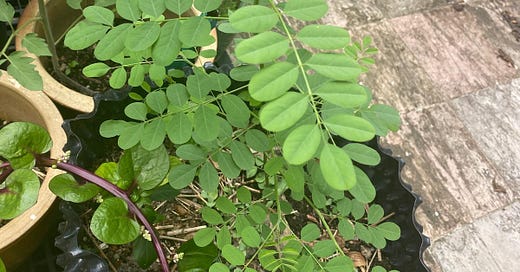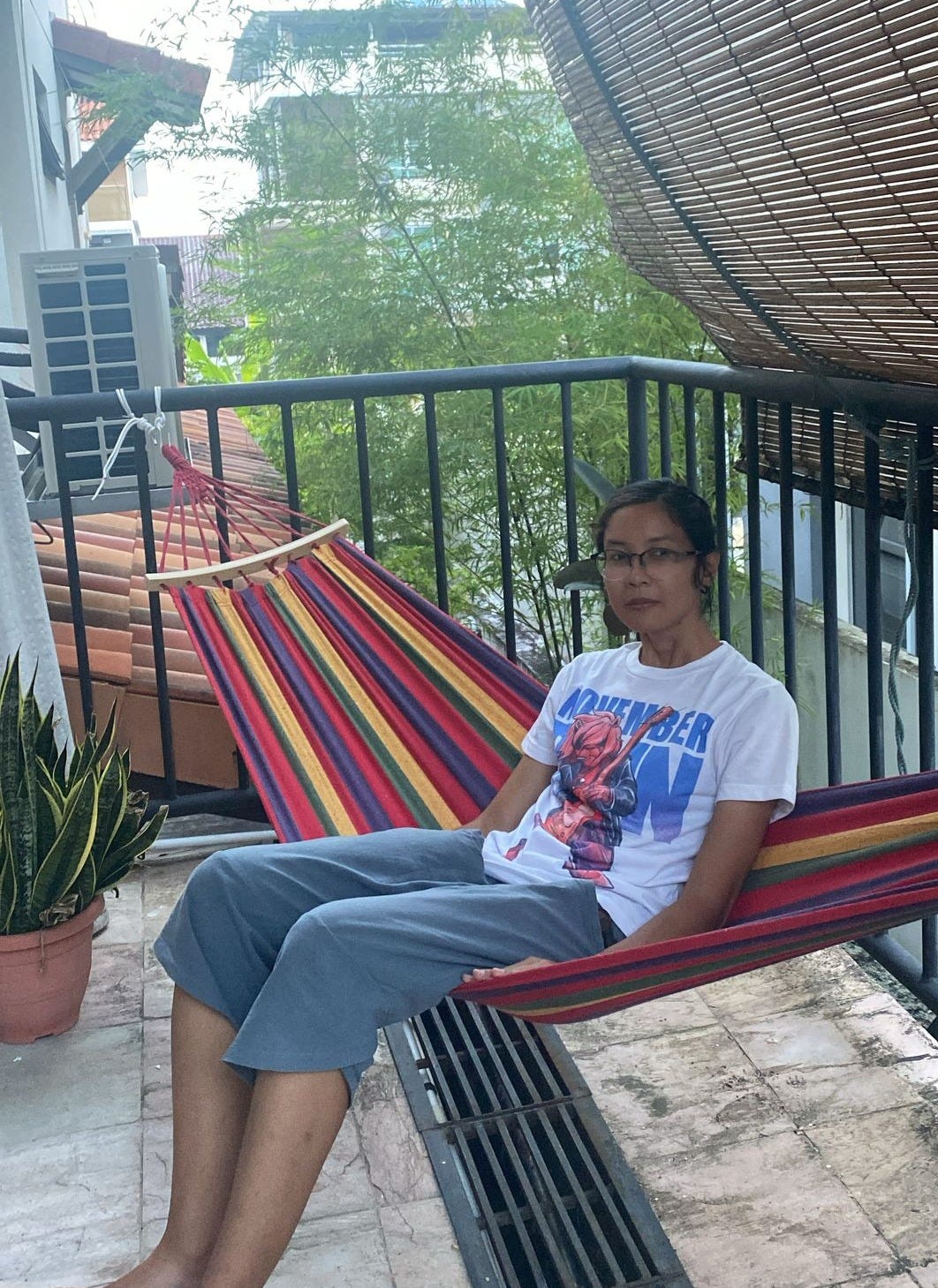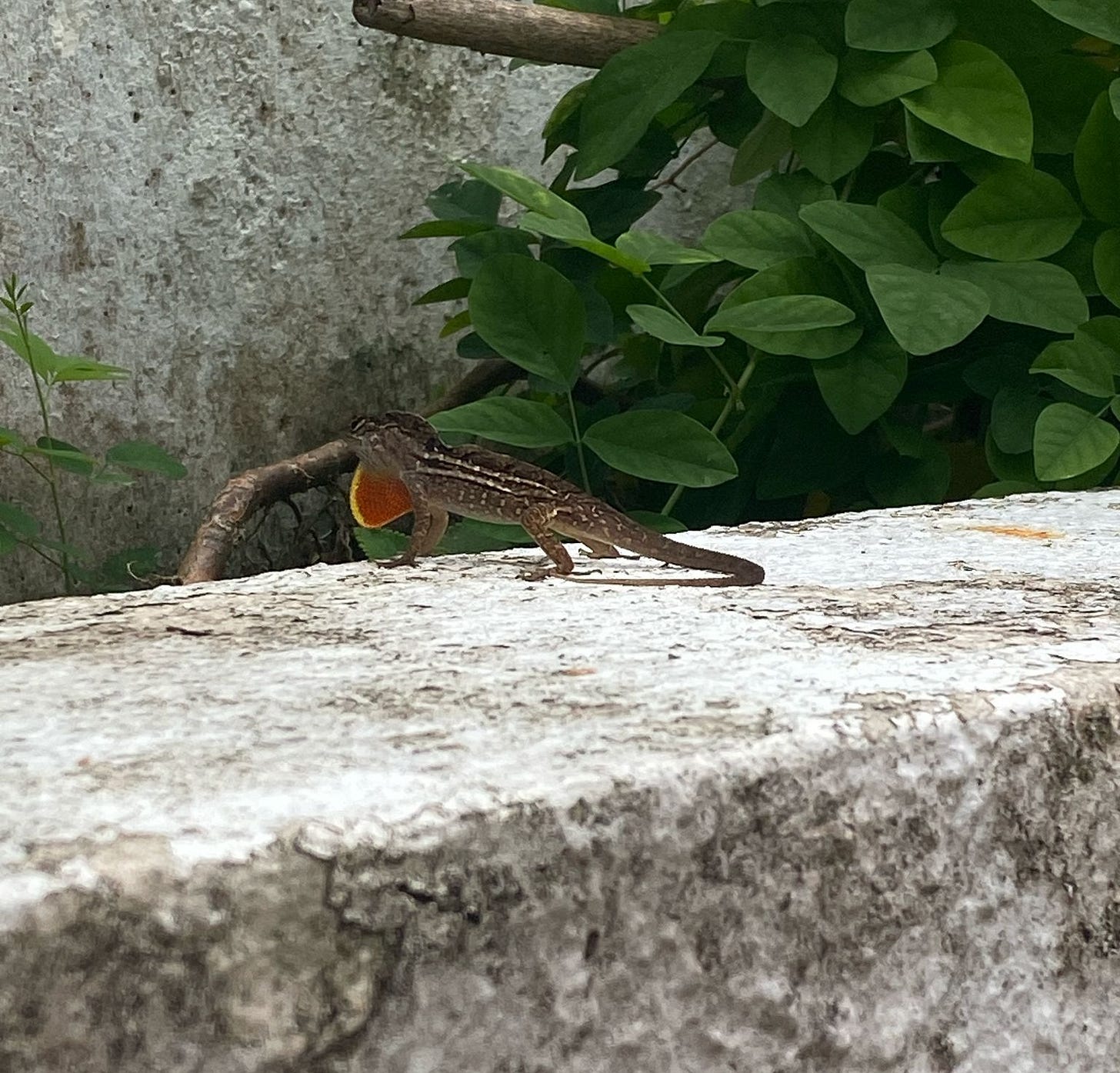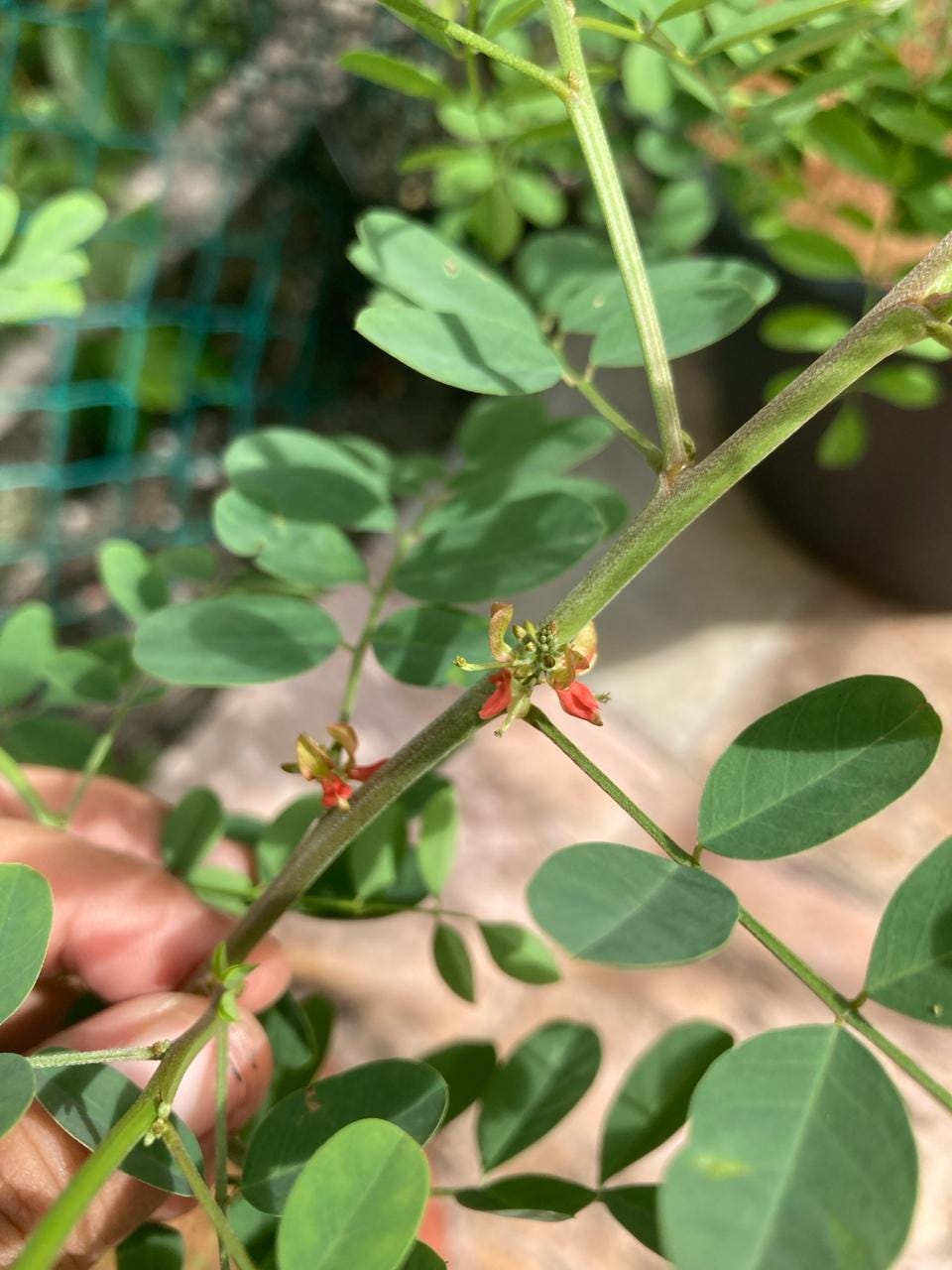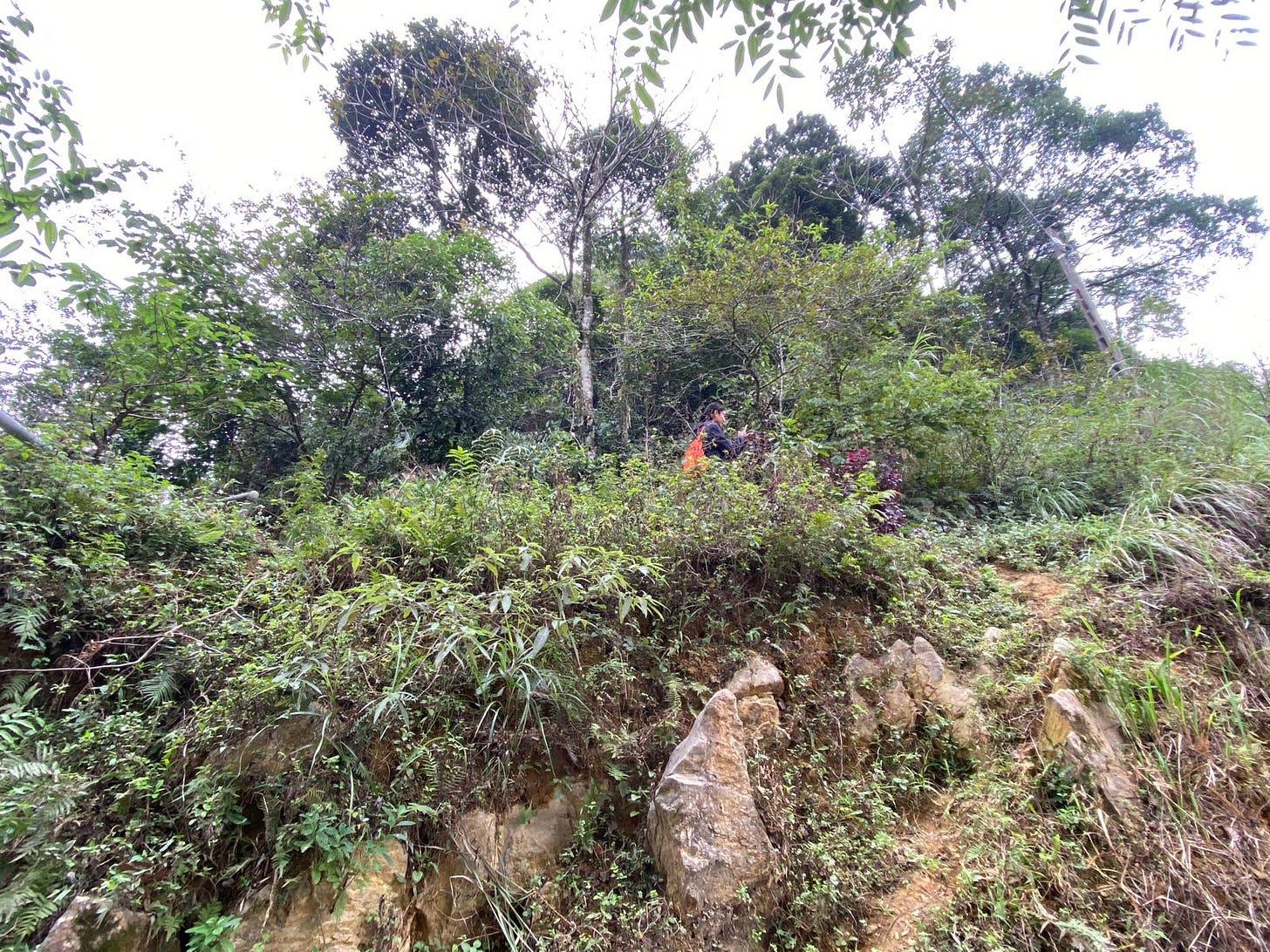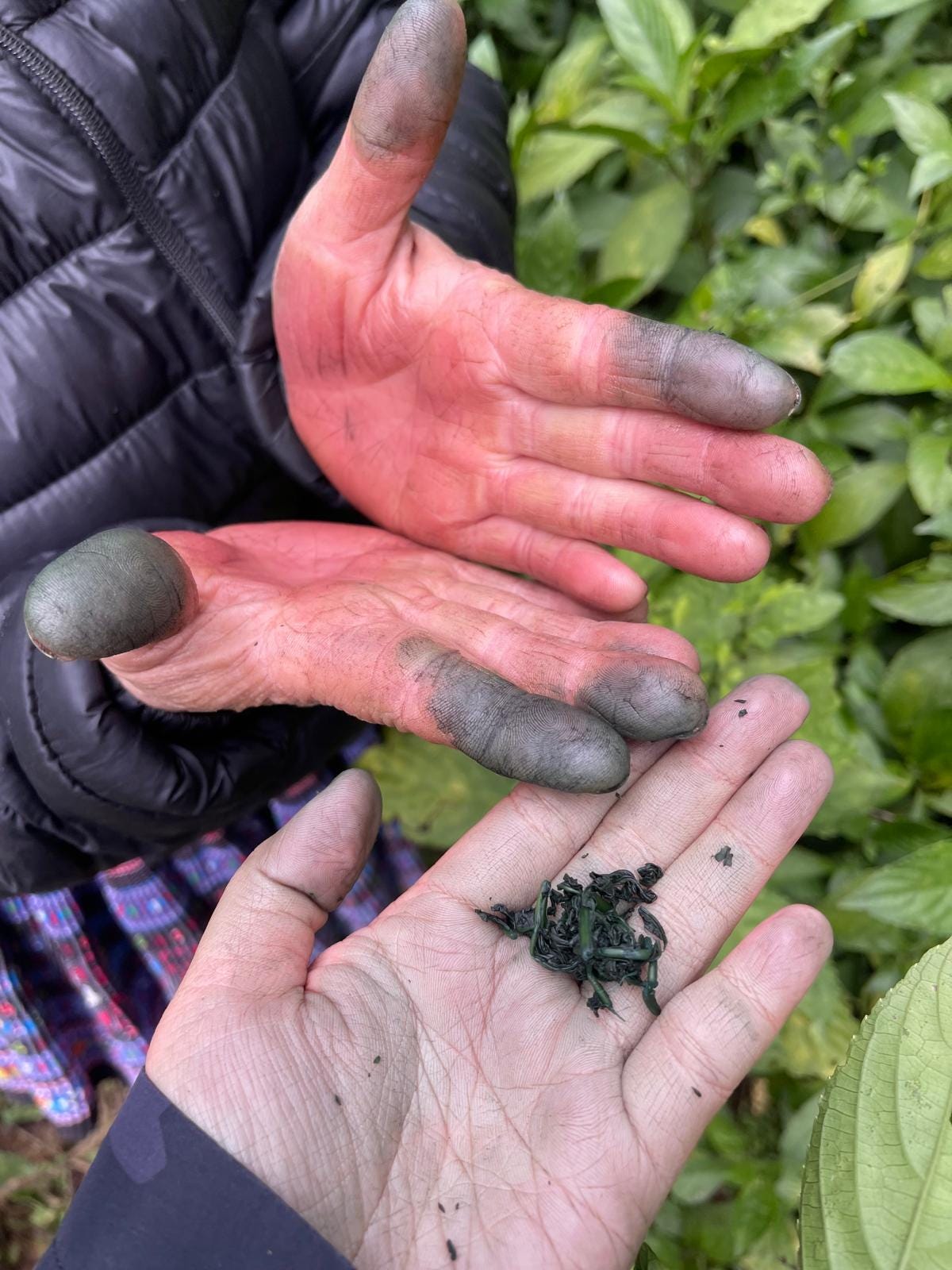Hello folks,
The weather has been alternating between hot sunny mornings and heavy rains in our area. This makes it a little difficult to enjoy the hammock that Shirin found for $10, but the plants seem happy at least. We have been finding a few new residents in our garden:
One morning, we found a comb-shaped pile of honey bees attached to a thin mulberry branch. We are waiting to see if the colony decides to stay or move on, but a few forager bees have started visiting the flowers of the curry tree next to their comb. Are we a little concerned? Yea, because now we wonder how we can ever prune our mulberry for fibres again. But for now, we think it’s really cool to be able to observe this swarming activity in our own space! James advised us to keep a safe distance because they are on the slight aggressive side.
Other little creatures spotted were two male brown anoles, who were wrangling each other near the butterfly pea bush, probably because they both took a liking to that spot. One of them was a lot shyer and immediately darted back into the bush when I approached, but the other one was not at all.
It has been nearly four years since we moved into this co-rental house, and we can finally feel that the space is growing life by itself, beyond our direct efforts. It gives our art practice with plants much more purpose, at the very least being able to know the materials we work with more deeply. Though most of our inks are still foraged or gathered from other spaces, we feel that growing grounds our work in a different way. It also trains our attention to our surroundings and tunes us in to the subtle natural rhythms that exist.
One of the traditional dye plants we have been trying to learn more about for a while now is the Indigofera tinctoria. While other plants such as the blue pea flowers can give blue also, the indigo pigment has a very different quality that we love. It is also more durable. Since January, we have been germinating a few Indigofera seedlings. Currently we have three healthy ones, who are starting the phase of leafy growth.
Previous experiments with our studio-grown indigos yielded very little; our guess is that we just don’t have enough plant volume, and perhaps also more attention is needed to how and when we harvest. Though from the bean family, we are unsure how efficient they are at nitrogen-fixing (an ability in some plants, particularly from the bean family, to symbiotically work with a bacteria to make nitrogen more available for plants to take them up), and they seem to be more on the nutrient-intense side to grow well. At least they seem very well-acclimatized to the hot sun and rain here.
There are several indigo-yielding plants around the world. Depending on the plant availability, traditional practices and other factors, different kinds are cultivated and used.
Back in December when we visited Pa Co village in North Vietnam, we passed by a store selling indigo textiles run by a lady Mua. The textiles hanging by the side of the road caught our eye, particularly the tree of life piece which was created with batik (wax-resist technique) and dyed a bright indigo blue.
Thankfully, Mua was patient enough to chat through google translate! She was a very friendly older woman from the H’mong ethnic group who learnt indigo dyemaking from her grandparents. When asked where they grow the indigo plant, she pointed us to the cliff right opposite the store. Initially confused, we then realized that someone had dug small steps off the edge of the opposite cliff.
The short climb up the slope led us to a patch of indigo plants known as cham, whose botanical name is Strobilanthes cusia. It looks very different from the Indigofera we have. This plant has much larger leaves with toothed margins, oppositely arranged, and very pretty tubular purple flowers!
It seems to be a different species from the Strobilanthes cusia listed on NParks website, which has much smaller flowers that grow in a droopy manner.
Mua rubbed a few of the fresh leaves on her palm, revealing how the initial green stain oxidizes to a blue in a few minutes. This is a trait of our Indigofera as well, and a fun way to identify plants that contain the indigo compound!
If anyone is interested to buy some indigo textiles from North Vietnam, drop us a DM and happy to connect you with Mua.
Pa Co village ended up being an amazing place to learn about traditional textile practices and makers in Vietnam. We will definitely head back to experience more next time. And hopefully in time to come, we will share how our plants can be transformed into the indigo pigments they are much known and loved for!
Upcoming Public Events:
RASA Sayang Farmers’ Market
9 Raffles Place, Republic Plaza Tower 1, #02-01/2
6th April, from 11am till 5pm!
We will be there and so come down and have so great food, conversations, and of course cool artsy stuff.
From Grain to Paint
There are also some slots left for this workshop with The Theatre Practice, with bundle deals available for group bookings!
For more details here: Workshop Description & Registration
Till next one,
Liz and Shirin

